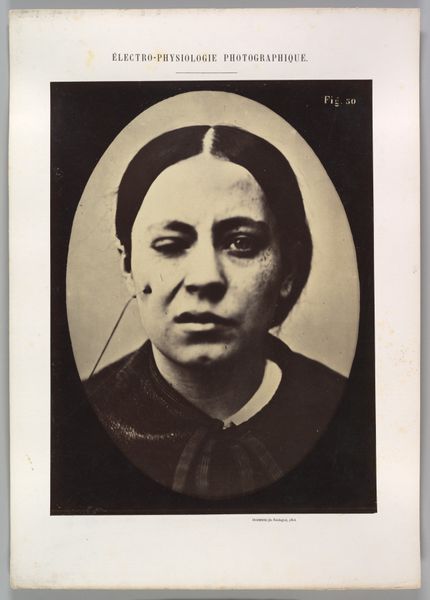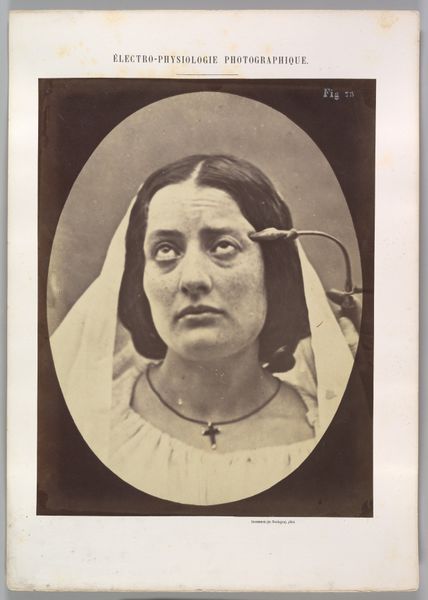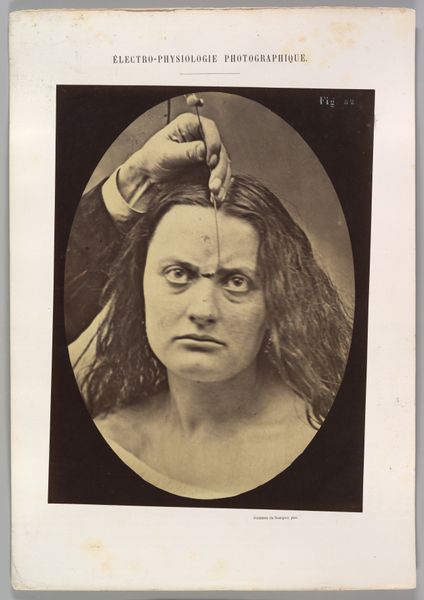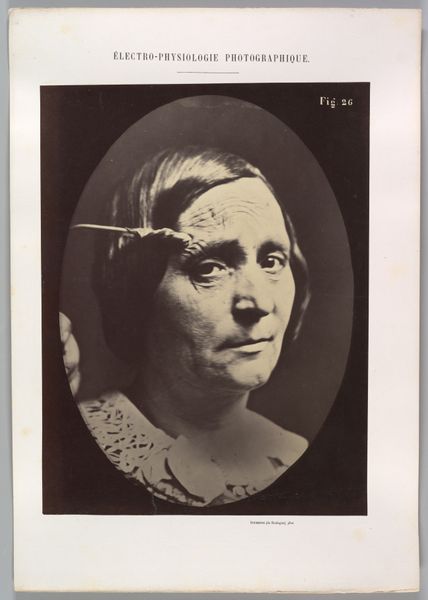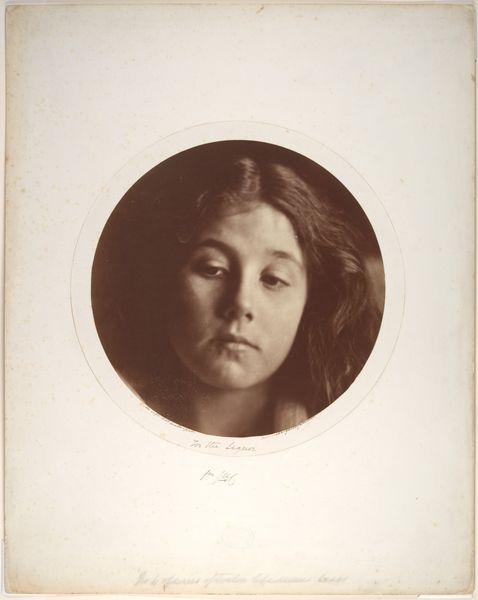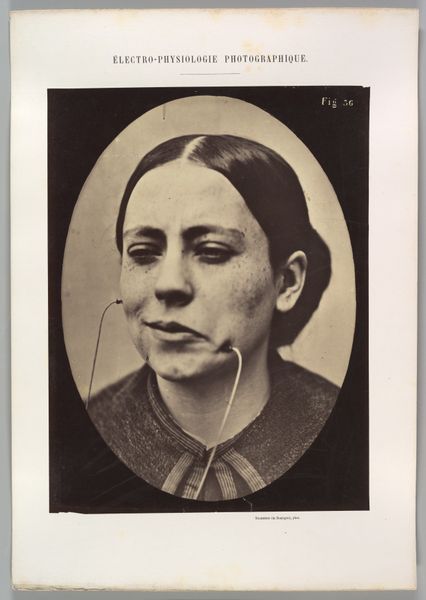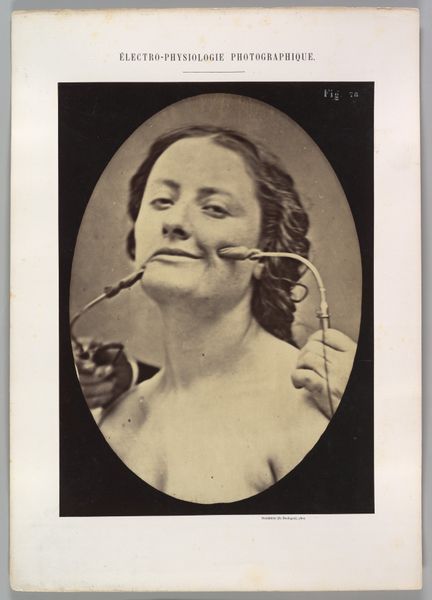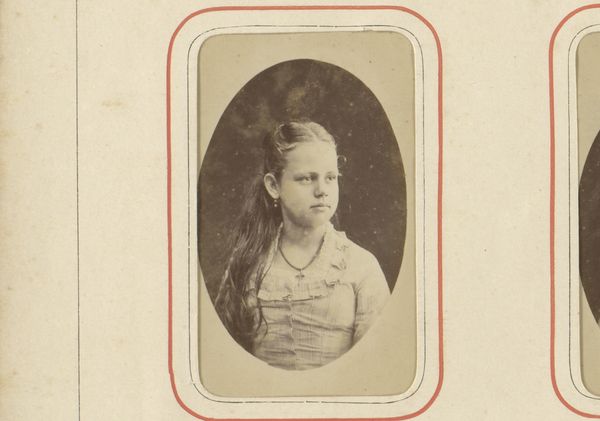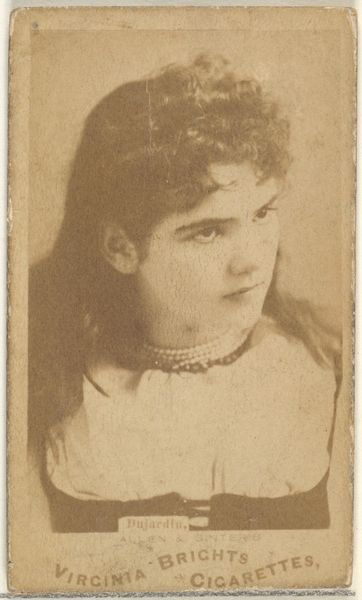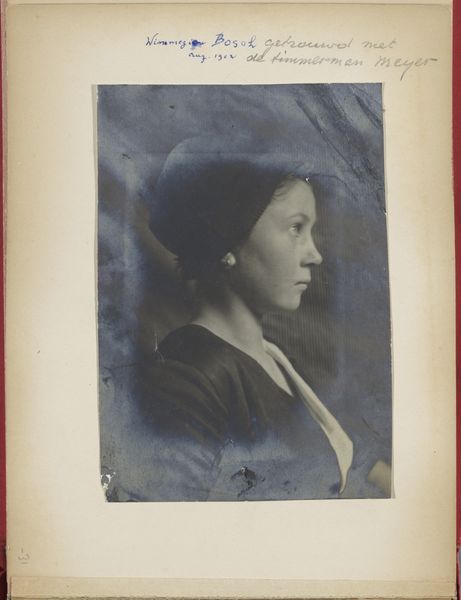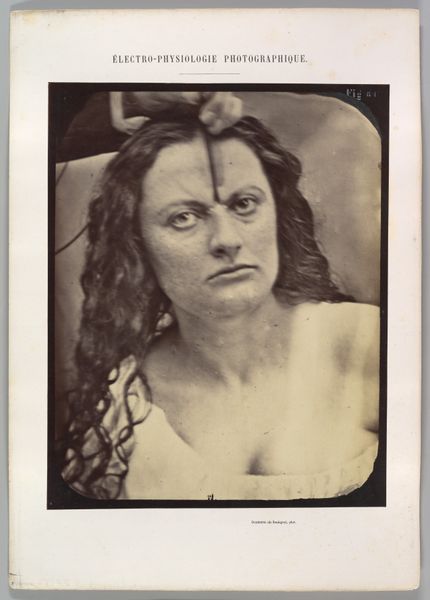
Figure 10: Showing the expressive lines of m. frontalis in a young girl 1854 - 1856
0:00
0:00
daguerreotype, photography
#
portrait
#
16_19th-century
#
daguerreotype
#
photography
#
realism
Dimensions: Image (Oval): 28.4 × 20.4 cm (11 3/16 × 8 1/16 in.) Sheet: 30 × 22.4 cm (11 13/16 × 8 13/16 in.) Mount: 40.2 × 28.4 cm (15 13/16 × 11 3/16 in.)
Copyright: Public Domain
Editor: This is "Figure 10: Showing the expressive lines of m. frontalis in a young girl" by Guillaume Benjamin Amand Duchenne, made between 1854 and 1856. It's a daguerreotype photograph and is currently housed at the Metropolitan Museum of Art. The image strikes me as quite clinical, even unsettling. The subject's expression feels forced. What do you see in this piece? Curator: The forced nature you observe is key. Duchenne, driven by his physiological research, sought to map the musculature of emotion. He believed specific facial muscles corresponded directly to specific emotions. Notice how the instrument manipulates her brow. Can you see the imposition of an external force shaping her face? Editor: Yes, it’s hard to miss. It's almost violent, the way the tool is placed there. Curator: Exactly. This is where cultural memory comes in. Traditionally, portraiture aimed to capture the inner essence of a person. But Duchenne subverts this. He's not revealing inherent character, but rather isolating and artificially triggering muscular responses linked to emotional expression. Editor: So, it’s less about capturing who she is, and more about recording a physical reaction? Curator: Precisely. It’s the dawn of scientific portraiture, prioritizing data over individuality. Consider how this contrasts with the Romantic ideals of the time, which celebrated spontaneous expression and subjective experience. Does this change your perception of the image? Editor: It does. Knowing the scientific intent makes the clinical feeling even stronger, and highlights the tension between science and art. I appreciate the glimpse into the changing priorities in the mid-19th century. Curator: Indeed, the tension between objective observation and subjective experience continues to shape our understanding of imagery even today.
Comments
No comments
Be the first to comment and join the conversation on the ultimate creative platform.
